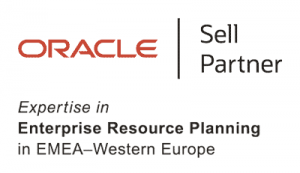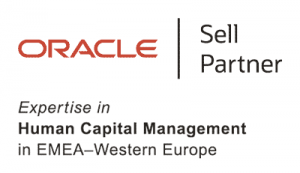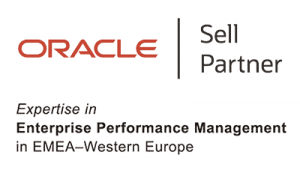As Featured in ERP Today | Written by Mark Sweeny, CEO of de Novo Solutions
Both the platform vendor and systems integrator landscapes are changing. Where to put your money?
SaaS cloud applications are continuing to evolve, and the innovation just keeps on coming. The first ten years of the cloud era saw the large platform vendors establish their back office enterprise platforms and go-to-market strategies with the mantra of ‘standardised processes’, driving economies of scale and cost. However, markets are cyclical in nature, and the current move to promoting industry solutions is nothing new and is a natural evolution. With most finance, procurement, HR and payroll processes being the same across any organisation and industry, it is the front of house and mid-office cross-cutting processes that really drive differentiation and competitive advantage.
This is not saying that the core ERP foundation platform is now obsolete – far from it – but industry vertical solutions are tailored to reflect how a given industry works. Consequently, the importance of the wider implications of the experience economy and providing personalised experiences over standardised processes becomes even more important and relevant as it is an enabler for innovation with digital disruption driving competitive advantage.
Industry vertical solutions – what are they?
Simply put, industry vertical solutions have greater potential to create value for customers. Established organisations are always having to find ways to differentiate themselves to remain competitive, especially from the smaller native digital disruptors that are backed by what can seem endless new investment monies courtesy of VCs and private equity. Meanwhile, the public sector is always looking for efficiency savings from policy delivery.
Consequently, such organisations carry significantly high levels of technical debt and often experience poor performance from their legacy on-premise systems, where it is quite common that the siloed front of house systems do not integrate through to the back office. Rewriting such systems takes time and monies that are often not available, and ‘lift and shift’ might reduce the total cost of ownership in the short term but this does not address the challenge of ageing technology that is less relevant to the business operation as an industry evolves.
Industry vertical solutions (or clouds) have the potential to accelerate and take the risk out of cloud migrations and deliver both economies at scale and cost as well as enabling an organisation with disruptive technology that is specifically relevant to their market. Healthcare providers are an example of this, with significant importance placed on improving the patient experience and requiring high levels of data protection, often going beyond the GDPR provisions.
What does this mean in practice?
In the first instance it means that the user experience of the system needs to reflect the industry and the ways of working in the organisation, whilst also remaining able to leverage standardised business processes that underpin all organisations. Over time this will evolve into an individual personalised experience reflecting how an individual works and interacts with the digital landscape without resorting to customisation. This is real digital transformation in action and is a theme that is only going to accelerate.
Build once and use many: this was a concept truly ahead of its time
In the ERP on-premise era of the mid-late 90s and 00s, the technology and its capabilities were just not available. This was a period that promised a lot but delivered very little in the way of innovation when compared with what is available today.
Roll forward a couple of decades and we are awash with artificial intelligence-powered digital workflows and analytics capabilities that allow us to drive innovation.
However, the real innovation only really occurs when these technologies are assembled to deliver relevant industry vertical solutions and positively disrupt the status quo of doing business.
I can personally vouch for this during the pioneering years of Certus Solutions and the Oracle SaaS cloud era. We developed a reusable blueprint for UK central government as far back as 2015-2016, and it is this framework that today underpins the Office for National Statistics, HM Treasury, and elements at the Medicines and Healthcare products Regulatory Agency. This blueprint is also at the core of the Home Office Metis programme with its final implementation found at the Crown Prosecution Service.
To put it simply, Oracle SaaS applications were configured to reflect the common processes and reporting of how the UK Civil Service works. Build once and use many: this was a concept truly ahead of its time both in thinking and in its overriding objective to derive maximum value for the public sector through process convergence and reusability.
An alternative case study is Inoapps, another well-known Oracle partner that has its origins in the oil and gas industry and which now has available an Energy for Cloud solution.
The importance of industry knowledge
Any experienced business development professional will tell you the sales process is just a series of conversations. However, for these conversations to be valuable to the buyer, they must be relevant and dialled into the pain points of a given industry and organisation. Consequently, having deep industry knowledge of a given vertical is a must if you want to be successful.
Clive Swan, former SVP Oracle Applications and now investor and non-executive director, says: “Cloud and SaaS technologies simply allow innovation at scale and through creating industry vertical solutions the opportunity to rethink and re-engineer whole industries and ecosystems is available. That’s why this technology is so exciting as the possibilities are endless.”
Sasha Wight, director of employee experience at wrkflow, says: “Organisations looking to deliver the very best employee experience in the hybrid workplace are embracing the concept of hyper-personalisation. The first step towards this is ensuring employee journeys reflect the nuance of the industry your employees operate in.”
Evolution at pace
SaaS solutions are leaving behind solely being associated with the back-office enterprise with greater focus on the front of house. Microsoft has been the most vocal in pushing this narrative and in their own words ‘accelerate time to value, speed up innovation, and drive benefits for customers, employees and organisations.’ The company is now offering cloud solutions for retail, healthcare, manufacturing, financial services and non-profit organisations, whilst also providing cross-cutting industry solutions for sustainability.
Not to be outdone, ServiceNow has also been extremely vocal in encouraging its ISV partner ecosystem to create industry vertical solutions. The organisation itself announced last year its OT Management Solution for manufacturing organisations, alongside its intention to create industry vertical solutions for the banking, healthcare and life sciences.
So where is the value?
The value is no longer in just having a systems integrator or management consultancy that can lay down references in any given domain space and which can quote how many implementations they have done and how quickly they have done them. No-one gets a gold medal just because you can put a SaaS system in at record time and at the cheapest price, so be warned, the race to the bottom of the rate card never does you any favours in the long run, and SaaS is a long-term investment.
Instead, the organisations that can bring to the table the blueprint for your given industry, backed by a relevant knowledge basis and an ongoing commitment to stay relevant as the business evolves either through legislation, industry practice or innovation, will be the winners for the future. Both the platform vendor and systems integrator landscapes are changing.
I, for one, know where my money is going to be.
















